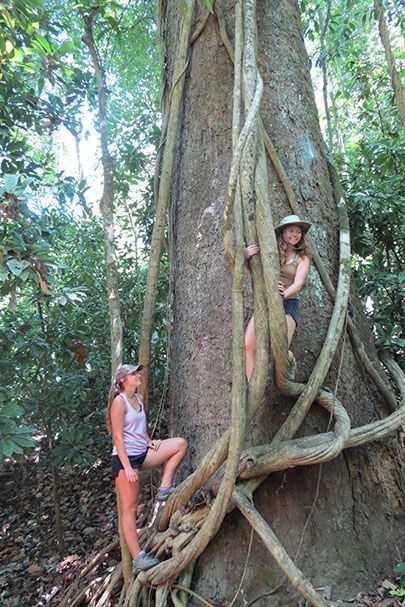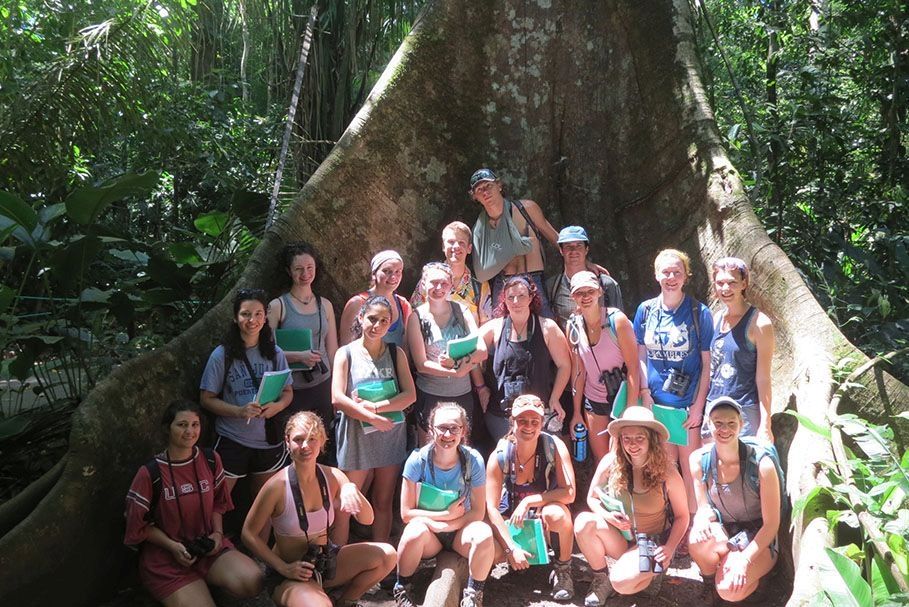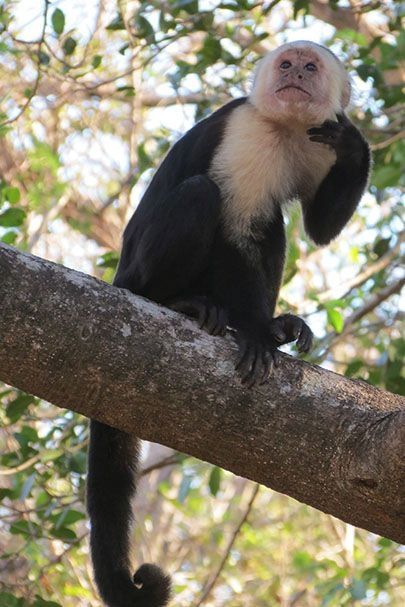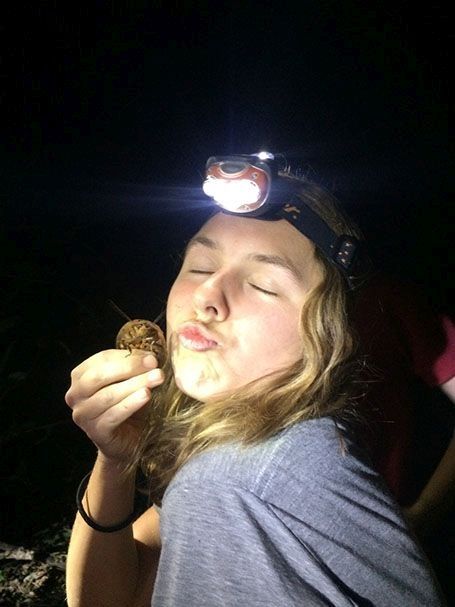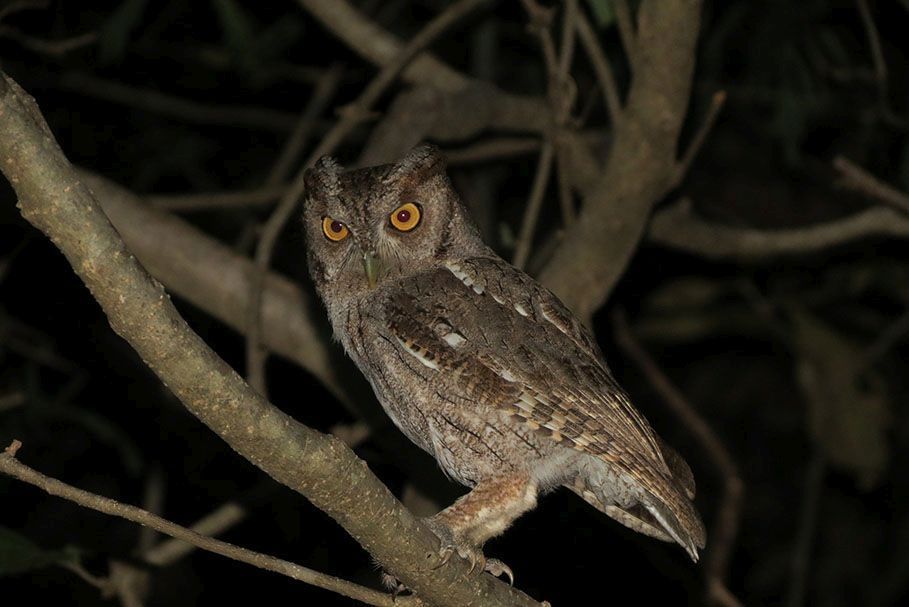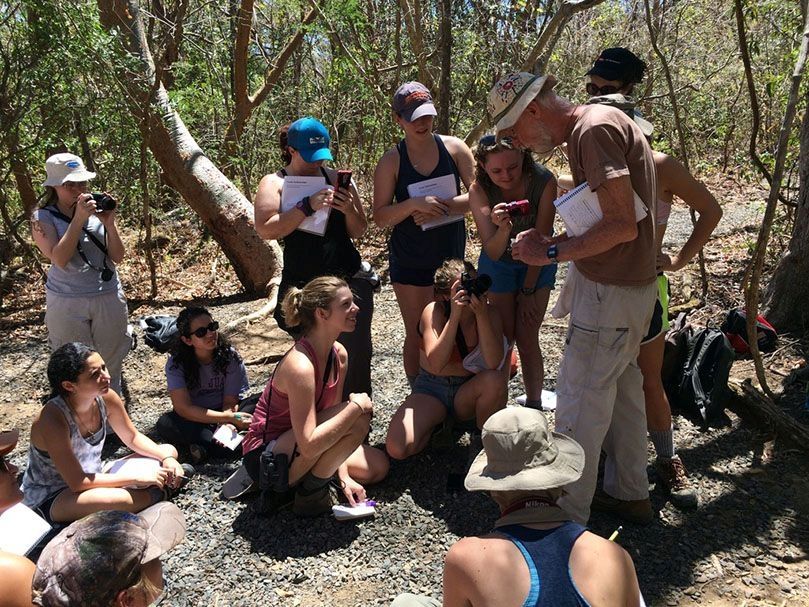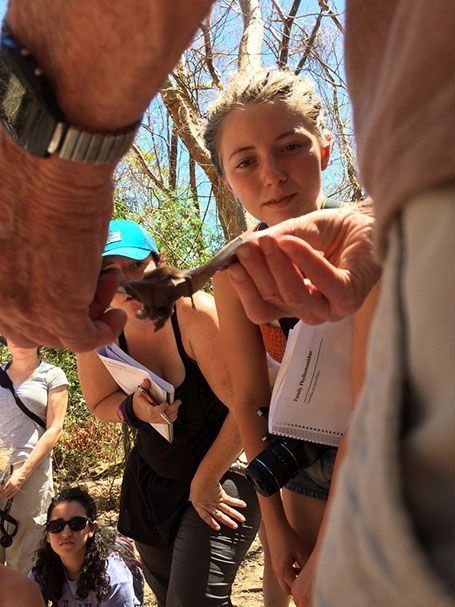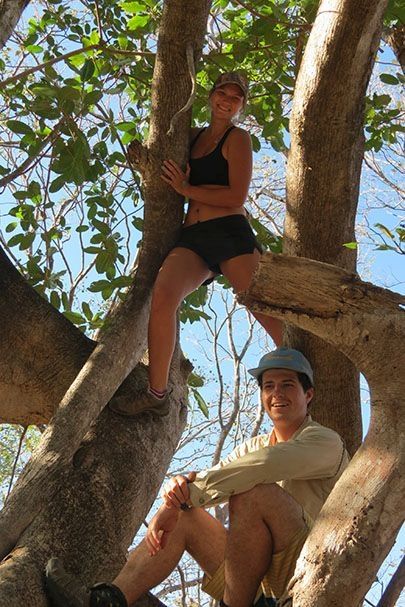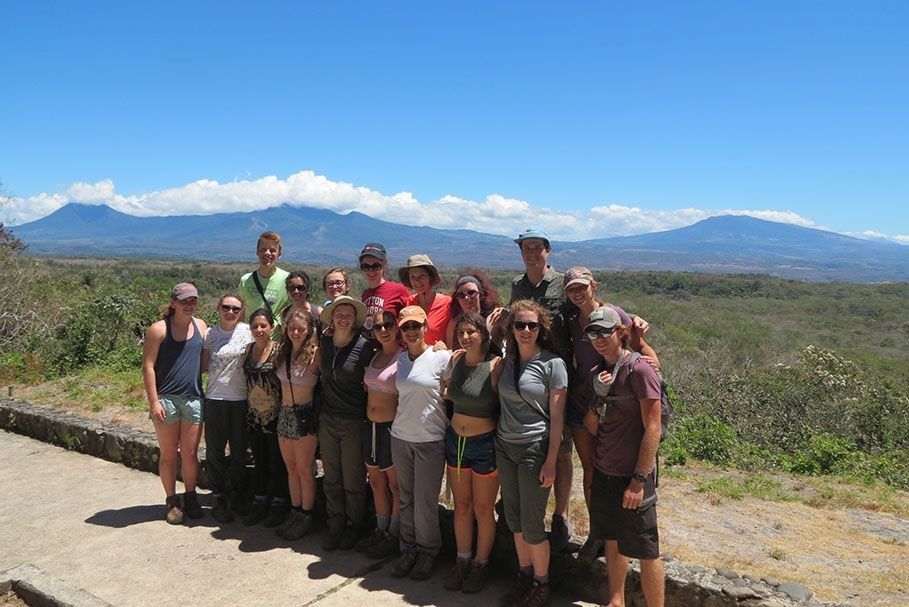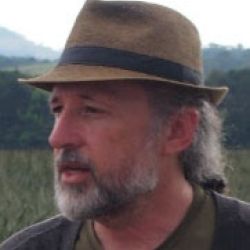From Wet Forest to Dry Forest: Getting to Santa Rosa National Park
We left Corcovado behind and it is time to move on the Pacific slope going from wet to dry forest. Our final destination is Santa Rosa National Park, located on the north part of the Pacific slope; but on our way there we are making a short stop at Carara National Park. Carara National Park is located in the Central Pacific and is a transition between the wet forest and the dry forest; this moist forest has a mix of species that you can find in both wet and dry habitats being the limit of the distribution within the country for some of these species. Here we spent the morning walking along the trials learning about many of the species found here.
We arrived to Santa Rosa National Park and discover a completely different ecosystem than the ones we have visited before. A historical site and an area in regeneration that used to be mostly cattle pastures; this National Park showed us many species of animals: monkeys, birds, lizards, bats, insects, etc., and many species of plants that make this area an unique habitat for Costa Rica.
We enjoyed hikes during the day, night hikes, lectures and activities that teach us about the importance of Conservation of Tropical habitat and how you can bring back nature to areas even after only a few years of regeneration and protection when things are done the right way.
The first field trip is over, but now is time to meet our new home and make it to Monteverde where we will be learning more about Conservation and Tropical Biology.
Related Posts
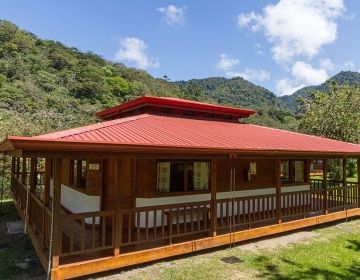
CIEE Monteverde Campus Used in Insect and Light Research Study
Have you ever wondered why insects are drawn to artificial light? From campfires to porch lightbulbs, moths and other insects appear to congregate around these sources of light as soon... keep reading
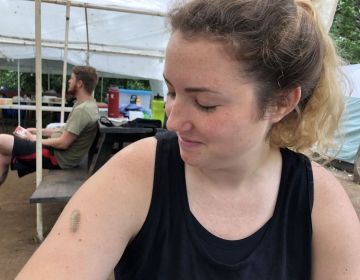
Our program through the eyes of a Student
Our Summer student Maddie Beale from the State University of New York at Fedonia wrote a blog about how she found us, the process of choosing our program and the... keep reading
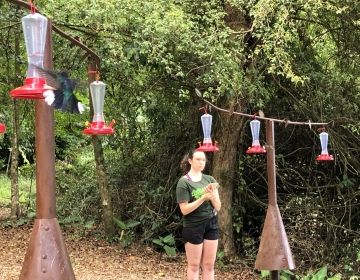
Independent Research Projects: Part I
The Tropical Ecology & Conservation students are working on their independent projects right now, many different ecology topics are being cover that involve both field and lab work. From Leaf-cutting... keep reading
